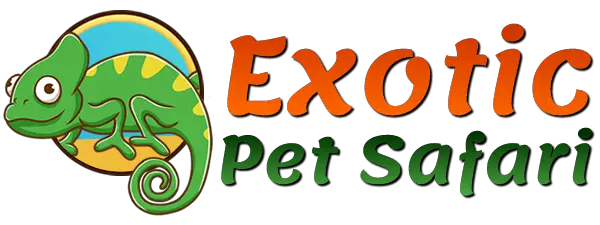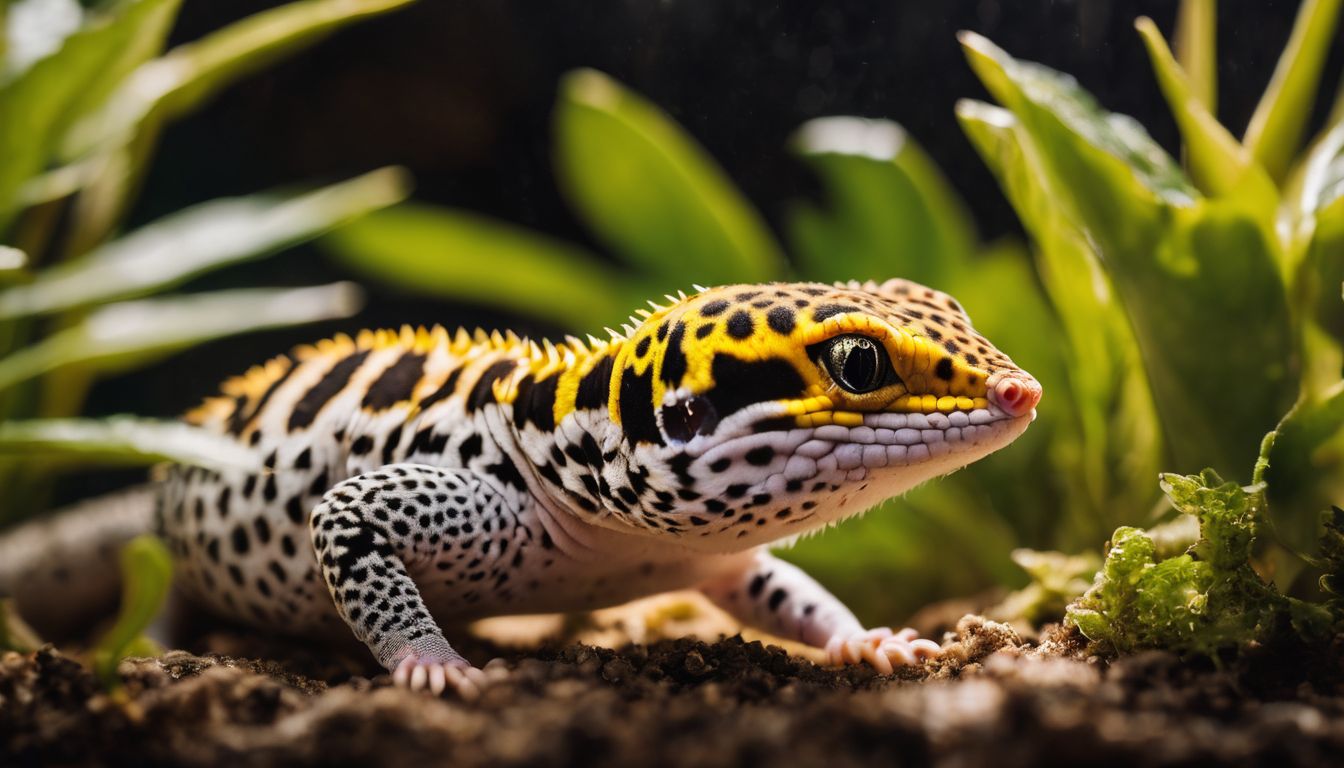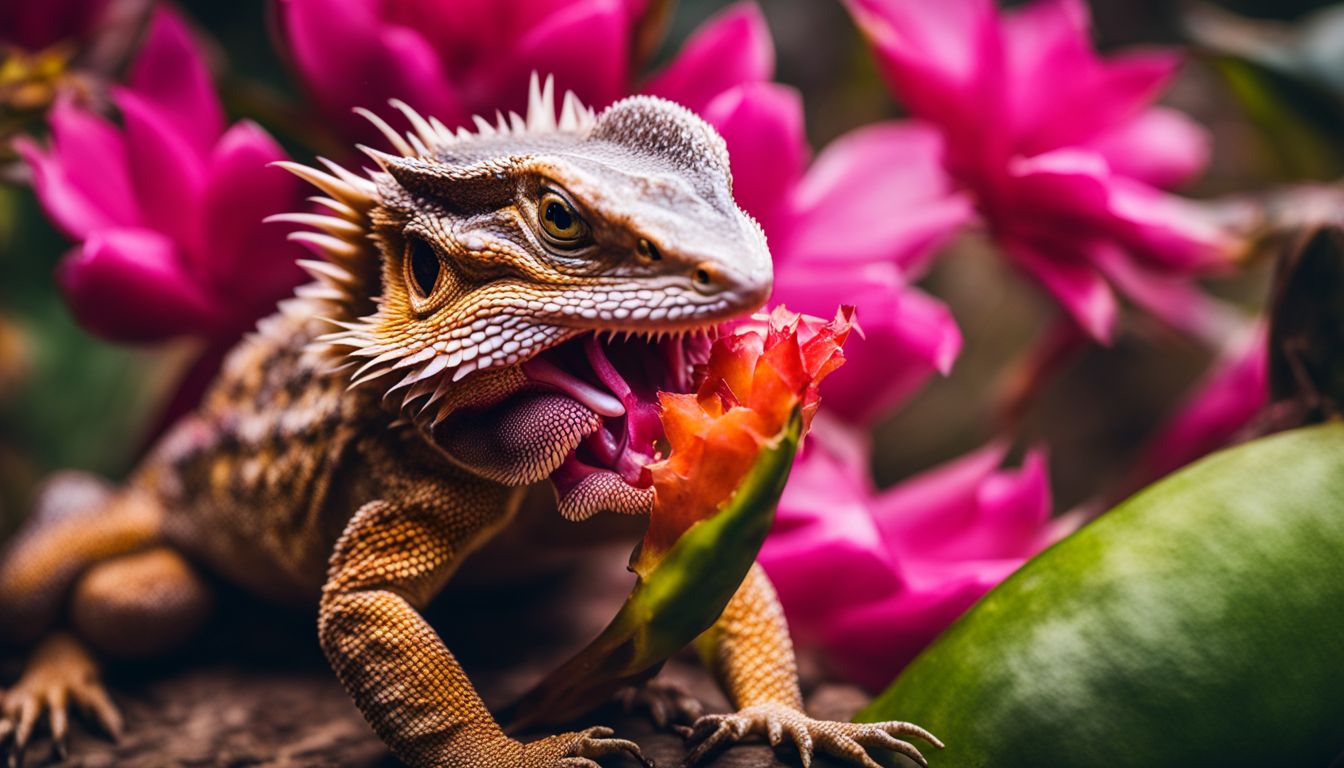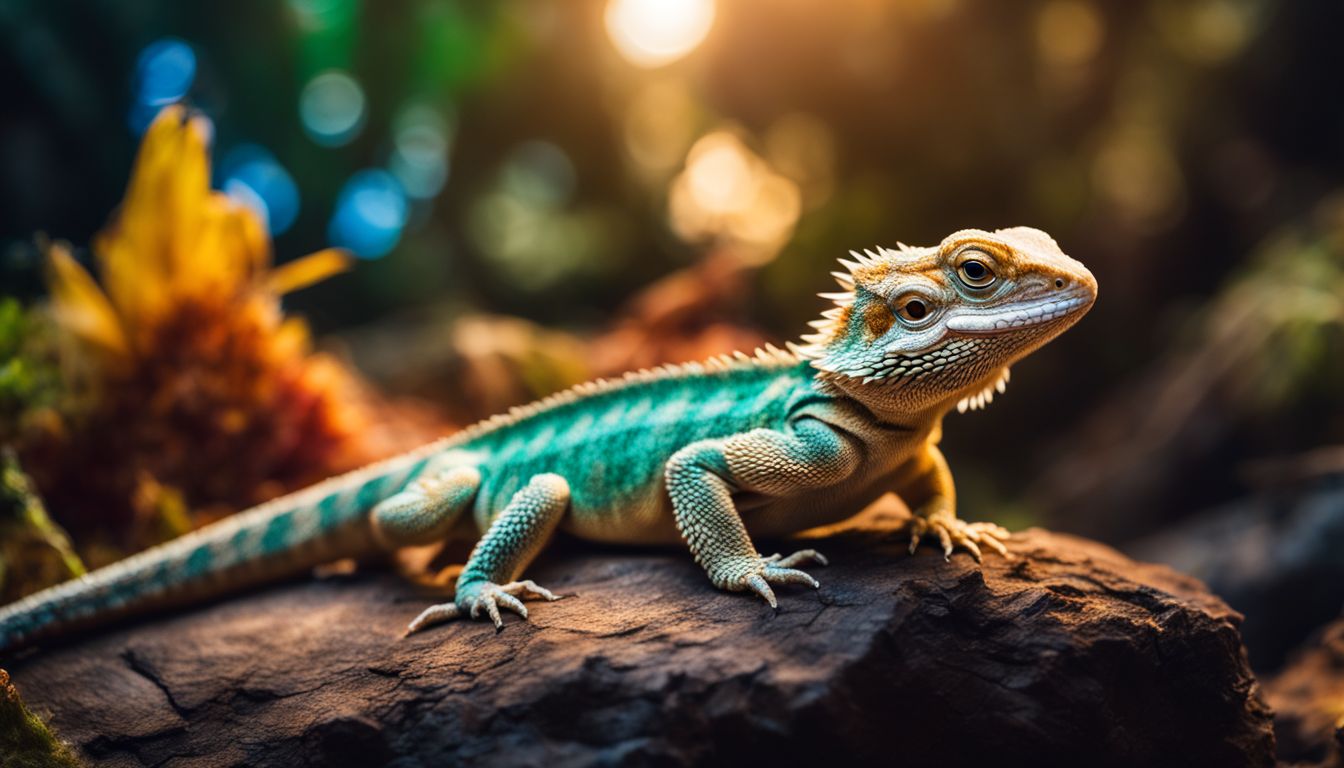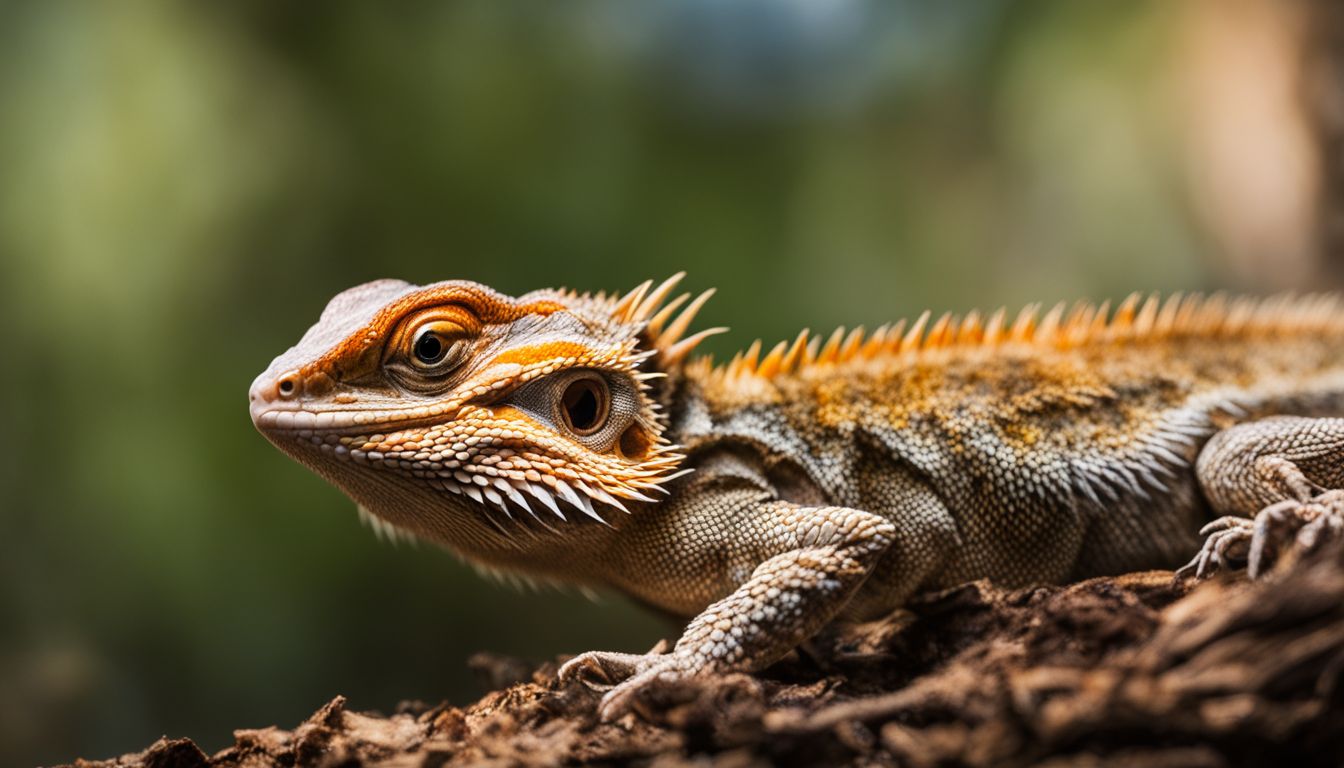If you’re the proud owner of a leopard gecko, you’ve probably heard about wax worms. These little critters are often touted as a yummy treat for your pet lizard, but it’s not always clear if they’re the best choice for their diet.
Like any loving pet parent, you want to make sure that every meal counts towards the health and happiness of your scaly friend.
Wax worms do pack a punch with calcium — crucial for preventing scary things like bone disease in your gecko. But feeding them can be tricky; while they’re protein powerhouses, they also come with a lot of fat which can mean trouble if given too much.
This article will explore both sides of serving up these wiggly snacks so you can feel confident about what’s going into your gecko’s belly.
Ready to learn how to spoil your leopard gecko right? Let’s dig in!
Key Takeaways
- Wax worms offer high levels of protein and calcium, supporting growth and strong bones in leopard geckos.
- However, their very high fat content can lead to health issues if overfed, such as obesity and fatty liver disease.
- Feeding wax worms responsibly, as an occasional treat and in appropriate portion sizes, while maintaining a varied diet with other nutrient-rich insects is crucial for promoting the well-being of pet leopard geckos.
Nutritional Profile of Waxworms

Waxworms are high in fat and protein, making them a popular treat for leopard geckos. They also contain some vitamins and minerals, although they are not as nutrient-dense as other feeder insects like mealworms or crickets.
Macronutrients
Wax worms bring an interesting nutritional profile to the table when it comes to the macronutrient needs of leopard geckos.
| Macronutrient | Role in Diet | Content in Wax Worms |
|---|---|---|
| Protein | Essential for growth and repair | High |
| Fat | Energy source | Very High |
| Carbohydrates | Less important for carnivorous reptiles | Low |
| Calcium | Crucial for bone health | Good source |
Their high protein and calcium content support growth and strong bones, aligning with the needs of developing geckos. However, their very high fat content can lead to health issues if not fed in moderation. It emphasizes the importance of responsible feeding practices.
Vitamins and Minerals
Understanding the content of vitamins and minerals in waxworms is crucial for maintaining the health of your leopard gecko. These little larvae pack a variety of nutrients essential for proper growth and health maintenance. Below is a simple table summarizing the key vitamins and minerals found in waxworms that are beneficial to your pet.
| Nutrient | Benefit to Leopard Geckos |
|---|---|
| Calcium | Essential for strong bones, helps prevent metabolic bone disease |
| Protein | Crucial for growth and cell maintenance |
| Fat | Provides energy, but should be moderated to prevent obesity |
| Vitamin A | Supports vision, skin health, and immune function |
| B Vitamins | Assist in metabolism and energy production |
| Iron | Important for blood health and oxygen transportation |
Feeding your leopard gecko waxworms can contribute to their calcium intake, which is important for preventing metabolic bone disease. Protein, another significant component, aids in their growth and overall well-being. Remember, the high fat content in waxworms, while a good energy source, necessitates moderation to avoid obesity. Vitamins, such as Vitamin A, support various body functions including vision and immune health, while B vitamins play a role in metabolism. Iron is another critical mineral for maintaining healthy blood. Always ensure these treats are part of a varied diet to promote a balanced intake of nutrients.
The Benefits of Feeding Waxworms to Leopard Geckos

Waxworms can stimulate appetite in underweight geckos, making them a useful option for helping your pet regain lost weight. They also serve as high-value treats, which can be especially helpful for training and bonding with your gecko.
Stimulating Appetite in Underweight Geckos
Sometimes a leopard gecko might not eat enough and can become too thin. Wax worms can be very helpful in these cases because their tasty flavor gets the gecko interested in eating again.
These little worms are like a special snack for the lizards, making them more eager to chow down when they might not feel like it.
Feeding wax worms to an underweight leopard gecko should still be done with care. You don’t want them to eat only wax worms and miss out on other important foods they need for good health.
So, make sure you give just the right amount of these fatty snacks along with other healthier meal options.
Use as High-Value Treats
When it comes to leopard geckos, wax worms can serve as high-value treats due to their tasty nature and high-fat content. These attributes make them highly attractive to geckos, especially for those who may be picky eaters or need a little extra encouragement to eat.
However, it’s important to remember that while wax worms can be beneficial in stimulating appetite and providing a special treat, they should only be given occasionally and not as a staple in the gecko’s diet.
Overfeeding these high-fat treats could lead to health issues such as obesity and fatty liver disease, making moderation crucial when using wax worms as high-value treats for your pet leopard gecko.
The Downsides of Waxworms in a Leopard Gecko’s Diet
Feeding waxworms to leopard geckos can lead to obesity and fatty liver disease due to their high fat content. Overfeeding can also result in nutritional deficiencies and potential addiction to the high-fat treat.
Risk of Obesity and Fatty Liver Disease
Waxworms, although a tasty treat for leopard geckos, can pose risks such as obesity and fatty liver disease if overfed. Due to their high-fat content, excessive consumption of wax worms may lead to weight gain in geckos, increasing the risk of developing obesity-related health issues.
Moreover, the fat content in wax worms can contribute to the development of fatty liver disease in leopard geckos when consumed excessively. It’s important to remember that while wax worms offer nutritional benefits, they should be fed sparingly to avoid these potential health concerns.
Knowing about the downsides of feeding waxworms is crucial for responsible pet ownership. Once you understand these risks associated with waxworms’ consumption by leopard geckos, it becomes easier to make informed decisions on their dietary requirements.
Potential for Nutritional Deficiencies
After considering the risk of obesity and fatty liver disease, it’s important to note that relying too heavily on wax worms in a leopard gecko’s diet can lead to potential nutritional deficiencies.
While they offer some benefits, such as calcium and protein, they are high in fat and lack certain essential nutrients. Overfeeding wax worms can result in imbalances that may impact your gecko’s overall health.
Therefore, it is crucial to provide a varied diet including other insects like mealworms or calcium worms to ensure your leopard gecko receives all the necessary nutrients for their well-being.
The Danger of Overfeeding and Addiction
Leopard geckos can become addicted to wax worms due to their high fat content and sugary taste. Overfeeding these fatty treats may lead to obesity and even fatty liver disease in geckos.
It’s essential to limit the frequency of feeding wax worms and offer a varied diet that includes other nutritious insects, such as crickets, mealworms, or calcium worms. Moderation is key to ensuring that your leopard gecko maintains a healthy weight and receives a well-rounded nutritional intake.
Feeding Waxworms Responsibly
It is important to feed waxworms to leopard geckos in appropriate portion sizes and frequency to prevent the risk of obesity and nutritional deficiencies. Additionally, it is crucial to maintain a varied diet for overall health and well-being.
Appropriate Portion Sizes and Frequency
Feed wax worms as an occasional treat, not a regular meal.
The Importance of a Varied Diet
When considering the diet of a leopard gecko, it’s essential to prioritize variety. Offering a diverse range of insects such as crickets, mealworms, and calcium worms helps ensure that your gecko receives a balanced intake of nutrients.
This variation prevents them from becoming reliant on one type of food and reduces the risk of nutritional deficiencies. By incorporating different insect types into their diet, you can help maintain your gecko’s health and overall well-being.
Conclusion
In summary, wax worms can offer nutritional benefits for leopard geckos but should be fed in moderation. Varying the gecko’s diet is important to ensure a balanced intake of nutrients and prevent health issues.
By feeding wax worms responsibly, gecko owners can promote their pet’s well-being without compromising their health. How will you ensure a varied and balanced diet for your leopard gecko? Consider exploring alternative feeder insects to provide a diverse range of nutrients.
Remember, moderation is key when incorporating wax worms into your pet’s diet for overall health and happiness.
While considering the diet for your leopard gecko, it’s equally important to recognize signs of potential health issues; learn more by reading about what a dead leopard gecko looks like.
FAQs
1. Are wax worms a good food for leopard geckos?
Wax worms can be fed occasionally as a treat due to their high-fat content, but they should not be the primary diet for leopard geckos.
2. How often can I feed my leopard gecko wax worms?
It’s best to limit wax worm feeding to once or twice a week as an occasional treat, rather than being a regular part of their diet.
3. What are the nutritional benefits of feeding wax worms to leopard geckos?
Wax worms are high in fat and protein, making them a good energy source for underweight or sickly leopard geckos that need to gain weight quickly. However, they lack essential nutrients found in other feeder insects.
4. Can feeding too many wax worms harm my leopard gecko?
Feeding too many wax worms can lead to obesity and other health issues in leopard geckos due to their high-fat content, so it is important to use them sparingly.
5. Should I provide any supplements if I feed my leopard gecko with wax worms?
If you choose to feed your leopard gecko with wax worms, it’s important to dust them with calcium and vitamin supplements before offering them as this helps balance out their nutritional value.
